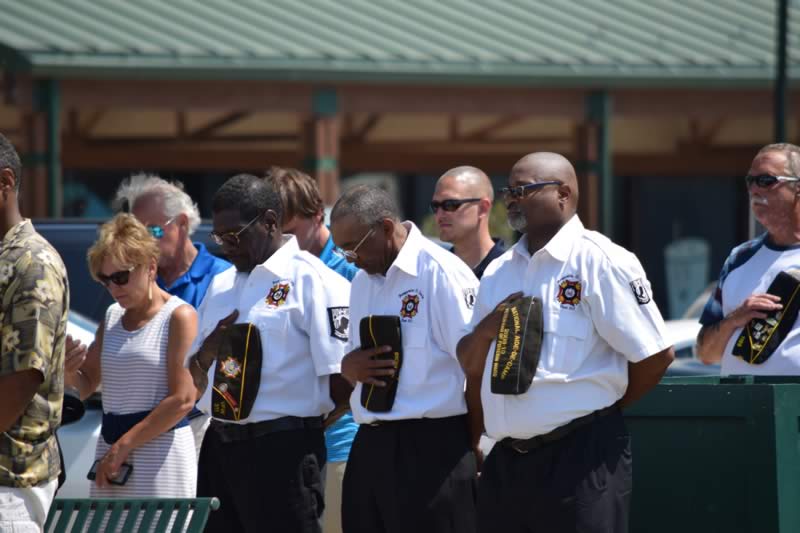WASHINGTON–(ENEWSPF)–Aug. 27, 2011 – Defense Secretary Leon E. Panetta has issued a prepare-to-deploy order for 6,500 active-duty service members from all of the services to support hurricane relief efforts if ordered, Pentagon spokesman George Little said today.
|
On requests from states for the department to provide hurricane relief assistance, Little added, it has taken the secretary an average of five to seven minutes to approve them.
U.S. Northern Command is coordinating the Defense Department’s support to the Federal Emergency Management Agency and to state and local hurricane response efforts along the East Coast.
Northcom is now supporting 16 FEMA-requested mission assignments, command officials said.
Over the past 24 hours, the command has designated Fort A.P. Hill in Virginia as a FEMA federal staging facility for support to hurricane disaster operations in Virginia.
Earlier this week, Northcom designated several bases as incident support bases, including Fort Bragg in North Carolina, Joint Base McGuire-Dix-Lakehurst in New Jersey, and Westover Air Reserve Base and Fort Devens in Massachusetts.
Northcom also has provided aircraft to help transport key federal personnel and supplies in support of disaster operations in North Carolina.
In Norfolk, Va., today, the U.S. Second Fleet commander said his ships are ready to support the hurricane emergency response if requested.
“Our ships have safely maneuvered out of the way of Hurricane Irene to avoid the destructive winds and seas,” Navy Vice Adm. Daniel Holloway said in a statement.
Twenty-seven ships got under way from Hampton Roads, Va., on Aug. 25 and rendezvoused with 11 other units already under way to avoid storm damage. The ships now are coming in behind the storm, prepared to provide support.
The commander said the Second Fleet has “a variety of capabilities from the sea, including search and rescue, medical support and aviation lift.”
Other Second Fleet units preparing to provide support include a mobile dive salvage unit, a naval mobile construction battalion air detachment, an underwater construction team and an expeditionary command element naval construction mobile construction battalion.
This morning, President Barack Obama held a conference call from the White House with Department of Homeland Security Secretary Janet Napolitano, FEMA Administrator Craig Fugate and other senior members of Obama’s emergency management team.
Napolitano and Fugate updated the president on the storm’s intensity and anticipated northward track, and the response and recovery assets that were pre-deployed along the East Coast.
Obama has signed emergency declarations for Maryland, Virginia, Massachusetts, Connecticut, New Jersey, New Hampshire and other states along the hurricane’s path.
During a visit this afternoon to FEMA’s National Response Coordination Center, Obama participated in a video teleconference with governors and emergency managers in North Carolina, Virginia, Maryland, Delaware, Pennsylvania, New Jersey, New York, Puerto Rico, Connecticut, Rhode Island, New Hampshire, Maine and Vermont.
“Each conversation I have had with state and local officials, they have confirmed to me that the relationship with FEMA has been outstanding,” Obama said.
“The interagency cooperation at the federal level has been outstanding,” the president added. “They recognize that this is going to be a tough slide getting through this thing, but they are very appreciative of the outstanding work that all of you have done.”
During a press briefing this morning, Napolitano told reporters that Irene remains a large and dangerous storm and urged people in affected areas to take it seriously and be prepared.
“We anticipate heavy rain, potential flooding and significant power outages throughout the area of the storm, which means all up and down the eastern seaboard,” she said.
The hurricane’s center “is now about 50 miles to the west of Cape Hatteras [N.C.], moving to the north-northeast at about 15 miles an hour,” Bill Read, director of the National Oceanic and Atmospheric Administration’s National Hurricane Center, said during the briefing.
Next, the storm’s winds and rain will affect the outer banks of North Carolina, and later this afternoon the Tidewater-Norfolk-Hampton Roads area in Virginia, he added.
“By late this evening the center should be moving past the Norfolk area … [and] this evening the storm will go right along the coast of the [Delaware-Maryland-Virginia peninsula], past places like Ocean City and Rehoboth Beach, impacting the Delaware Bay with storm surge and high winds,” Read said.
By early tomorrow morning, he added, Irene will move up the coastline of New Jersey, affecting local resort areas before making “its next big landfall across Long Island into New England, very close to New York City.”
Read said the forecast shows that the storm will bring hurricane force winds “right up to final landfall in New England.”
The meteorologists, he added, are “expecting now a swath of 5 [inches] to 10 inches of rain right across the mid-Atlantic, centered over the Philadelphia metropolitan area and into the New York metropolitan area and the western part of New England.”
Because these areas have had recent excessive rains, Read said they may be at risk for flash flooding and river flooding.
By Cheryl Pellerin, American Forces Press Service
Source: defense.gov









